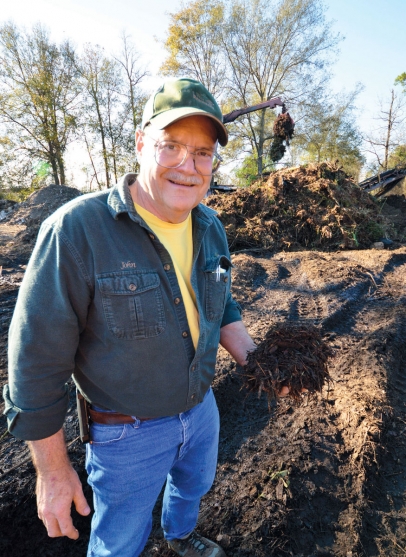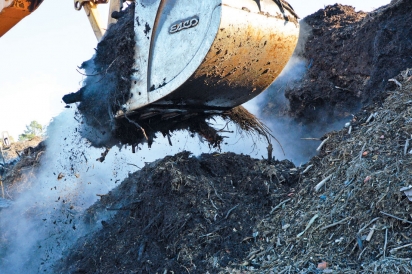Soil Scientist John Ferguson dishes about dirt
If you want to hang out with John Ferguson, plan on getting dirty: His office comprises 42 acres covered in mounds of mulch, heaps of soil and dunes of compost. At his company Nature’s Way Resources (NWR) in Conroe, Texas, he employs his extensive background as a physicist, geologist, chemist and licensed soil scientist to generate over 26 products ideal for the local growing environment.
“The native soils of the Houston Gulf Coast region are very poor,” says Ferguson, and so amending with organic components is essential to improving the ground and ultimately the produce that is reaped from that land.
“Healthy soil is alive and it’s free of contaminants, pollutants,” he says. “If you go out into a forest, forests are our most productive ecosystem [with] no disease [and] no pest control problems. Pick up a handful of soil; there are 6 trillion microbes in that handful. So, that’s what we want in our yards and gardens. If we get the soil alive like that the problems go away or greatly diminish.”
The single most cost-effective way to improve soil is with good-quality compost—though it is imperative that such nutrients are sourced from reputable producers such as NWR since there is no governing body ensuring the contents of a bag contains what the label states. Paying $10 a bag for soils and $6–$8 a bag for mulches may seem steep at first, but “if you use a high-quality product it’s cheaper in the long run,” he says. “You don’t have the weeds to deal with, you don’t have the chemicals, you get more yield, you have fewer pest problems and your total cost is less.”
Though specific recommendations vary based on current soil and what you want to grow, mixing three inches of compost into the top six inches of topsoil is a good starting point for immediate improvement. Over time you’ll progress from building mode to maintenance mode and eventually the soil will need only occasional human nudging via yearly additional compost to keep it on a healthy path.
Bonus: “As your soil gets more healthy you get more soil structure,” says Ferguson. “So water, instead of running off, soaks in.” Such efficiency alleviates the need for an irrigation system and savings show up on water bills to boot.
Healthy soil is a critical link between a plant’s yield and the nutrients that are accessible to us by eating those plants.
“Typically, most organic farmers tend to put more nutrients in the soil—trace elements, minor nutrients, more than the 16 you see in a bag of fertilizer,” says Ferguson. “So you get a healthier food, more nutrient-rich food in general. Part of the problem is plants have been hybridized over the years to grow in soils that are nutrient deficient. So we take these modern hybrids and grow them in rich soil and they’ve lost the ability to absorb the nutrients. That’s why the studies sometimes show there’s not much difference, but if you go back to an early open-pollinated variety there’s sometimes three or four times the nutrient density.”
Wondering what secrets your own soil is hiding? Two ways to find out are planting some seeds and watching what grows (and how well) or sending off a sample to a qualified lab for analysis.
Ferguson also lectures at events, garden clubs and other organizations where he can educate large numbers of people at one time. “I want to help people,” he enthuses. The ground is a great place to start.







